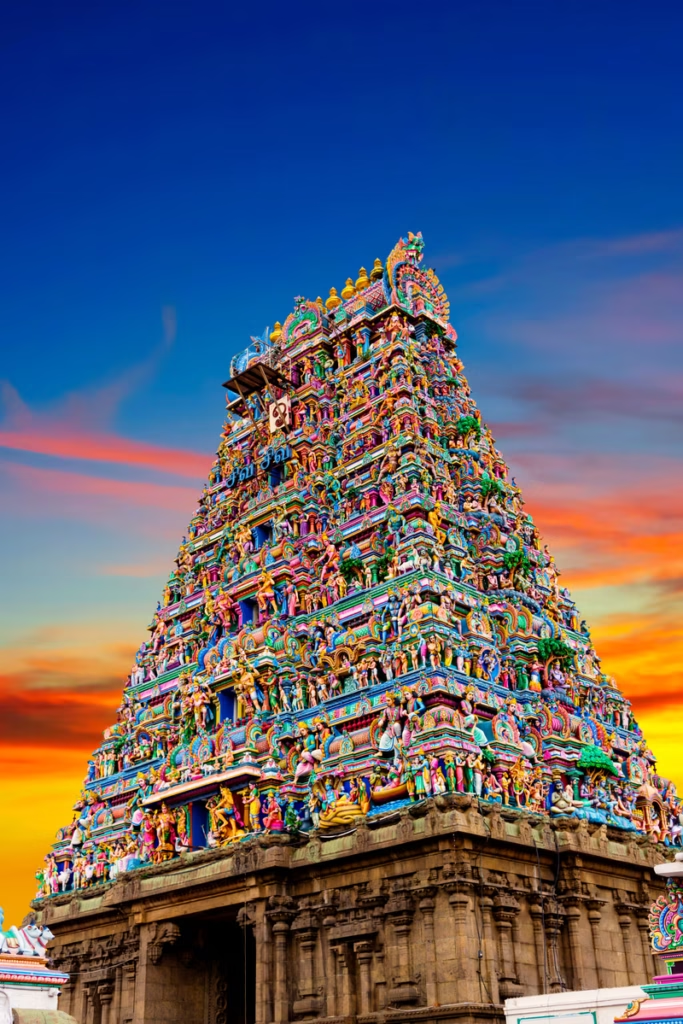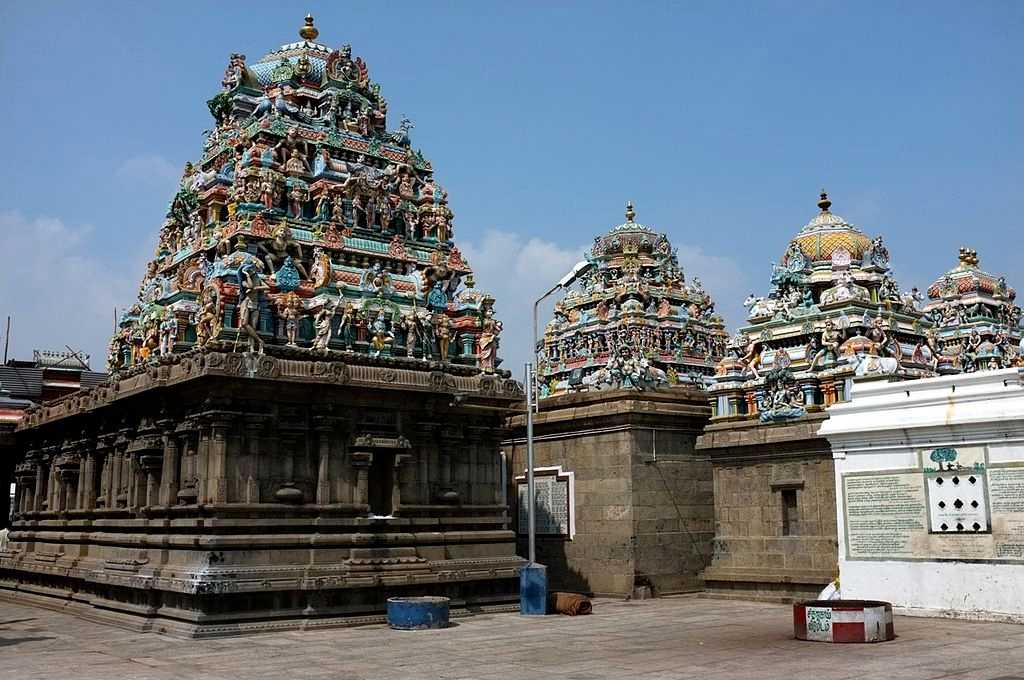
The Kapaleeshwarar Temple, located in Mylapore, Chennai, Tamil Nadu, is a magnificent Hindu temple dedicated to Lord Shiva. It is a quintessential example of Dravidian architecture and holds great religious, historical, and cultural significance.
Overview of Kapaleeshwarar Temple
- Deity: The temple is dedicated to Kapaleeshwarar, a form of Lord Shiva, and his consort Karpagambal, a form of Goddess Parvati.
- Location: Situated in the heart of Chennai, the temple is a hub of spirituality and an iconic landmark of the city.
- Significance: The temple is one of the oldest in Chennai and is associated with Tamil Saivism, which emphasizes devotion to Shiva.
Historical Background
- Origin:
- The temple is believed to have been built in the 7th century CE by the Pallavas. However, the current structure is thought to have been reconstructed in the 16th century CE by the Vijayanagara rulers after the original temple was destroyed.
- Mythological Connection:
- According to legend, the name “Kapaleeshwarar” is derived from the story of Shiva wearing a skull (kapala). Another tale narrates that Goddess Parvati, in the form of a peahen (mayil), worshipped Shiva at this site to seek his blessings.
- Origin:
Architectural Features
- Dravidian Style:
- The temple exemplifies Dravidian architecture, featuring a gopuram (tower), mandapams (halls), and intricate carvings.
- Gopurams (Towers):
- The east-facing tower, rising to about 120 feet, is adorned with colorful sculptures depicting deities and mythological scenes.
- The west-facing gopuram is smaller but equally intricate.
- Shrines:
- The sanctum sanctorum houses the idol of Kapaleeshwarar (Shiva) in the form of a lingam.
- Another prominent shrine is dedicated to Karpagambal, the goddess of prosperity and compassion.
- Mandapams (Halls):
- The temple features several halls with beautifully carved pillars. These are often used for religious discourses and festivals.
- Sacred Tank:
- A large temple tank, located near the temple, adds to its serene ambiance and is used for rituals during festivals.


Religious Significance
- Legend of Karpagambal:
- According to legend, Parvati was cursed to be born as a peahen. She prayed to Lord Shiva at this site and was eventually reunited with him.
- Nayanar Saints:
- The temple has a strong association with the Nayanars, the Tamil poet-saints who composed hymns in praise of Shiva.
- Navagraha Worship:
- Unlike most Shiva temples, where the Navagrahas (nine planetary deities) are not worshipped, the Kapaleeshwarar Temple has a dedicated shrine for them.
Festivals and Celebrations
- Panguni Peruvizha (March-April):
- The Brahmotsavam, a 10-day festival, is the most significant event. It includes colorful processions, rituals, and cultural performances.
- The highlight is the Arubathimoovar Festival, celebrating 63 Nayanar saints.
- Navaratri and Shivaratri:
- The temple sees grand celebrations during these festivals with special prayers, music, and dance performances.
- Karpagambal Festival:
- A festival dedicated to Goddess Karpagambal includes offerings and rituals seeking blessings for prosperity.
